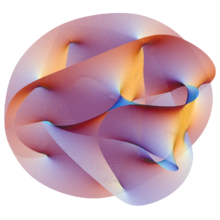I was watching a show last night about the “Big Bang.” I have been intrigued by the notion that if we peer far out enough in space we would be able to see the “Bang”, but I have never really heard how far we have been actually able to see. I now have my answer. According to astronomers and physicists, the universe is about 14 billion years old. We have been able to see, through heat signatures from the bang, out to about 380,000 years after the dawn of creation. In proportion to the age of the universe, that’s not bad, but of course, in relation to our short life span it seems like forever. At 380,000 years out, the expanding universe is just beginning to form stars and galaxies. If we were able to peer 300,000 years from creation, we would mostly only see the gases and dust that still existed after the bang. Thus, we can see when celestial bodies begin to form, but we may never be able to actually see the bang itself. Some theoretical physicists, who seem more like religious mystics than scientists, postulate that there are multiple universes, all created from their own Big Bangs. Each of those universes could have laws of physics quite different from our own, since it likely that the actual laws governing each are determined fractions of seconds after the creation. Some physicists hypothesize that our universe, and indeed all of the universes, will collapse inward only to start everything all over again.
There apparently is still no answer to why the bang in the first place and also no description of what the compressed matter that caused the explosion was surrounded with. Maybe that will wait until another Discovery Channel show.
I have recently become dubious of some theoretical physicists, including Stephen Hawking, who talk about string theory and m-theory. Their theories have arisen from attempts to reconcile Einsteinian macro physics, which explain fairly well the functioning of the macro universe, with that of quantum mechanics, that explains equally well the micro level universe. Theoretical physicists want to develop a theory of everything that can explain it all. In their efforts, they develop models that include hypothetical constructs that can explain the universe, but the hypothetical constructs themselves are totally immeasurable. For example, m-theory posits that there are 12 (some say 11) dimensions, only four of which are currently measurable (height, width, depth, and time). These theoreticians are not even sure that they will ever be able to measure them. If this is the case and measurement is the sine qua non of science, why then introduce immeasurable hypothetical constructs? It seems no different than saying that god is the theory of everything. Just because it appears to explain doesn't mean that is how it actually works




No comments:
Post a Comment